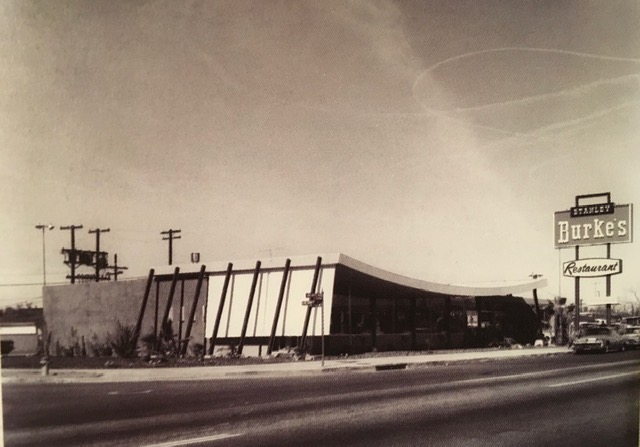On December 8, the Facebook page for Corky’s, a diner completed in the Los Angeles neighborhood of Sherman Oaks in 1958, announced that it will be closing its doors by the middle of the month following a lease dispute. The post lamented the treatment historic architecture receives in the city, stating that “Landlords just don’t appreciate these unique-style buildings and design.”
Designed by Armet & Davis, one of the most prominent firms designing Googie architecture during the post-war period throughout Los Angeles, Corky’s iconic roofline, playful neon signage, and stony facade make it an exemplary building of the popular, yet short-lived, style. Since the building first opened as Stanley Burke’s in 1958, the structure has survived the changing of hands and the decades of extensive remodeling that came with it. Corky’s interior is notable for its extensive use of wood-paneling, overstuffed green booths, and speckled drop ceiling.

Only a small handful of the Armet & Davis’s buildings still survive that exemplify the same exuberant Googie style, including Johnie’s Coffee Shop across from LACMA, and the iconic Norm’s on La Cienega. The building’s current owners are urging fans of the building to encourage city leaders to make Corky’s a Los Angeles landmark before its next owner potentially decides to demolish it, while Alan Hess, a local architectural historian and preservationist, has personally submitted a Historic-Cultural Monument application to the City of Los Angeles. “Unlike the prevailing examples of high Modernism,” Hess wrote in Googie Redux in 1986, “Googie was rarely boring. Its key features—futuristic details, expressive use of new materials, metal-frame structures that allowed seemingly weightless canopies and free-flowing spaces—elicited the fluidity of the Modern era.”
As of yet, there are no demolition permits have been filed with the city, potentially indicating that the exuberant structure could be here to stay, regardless of its tentative landmark status.











